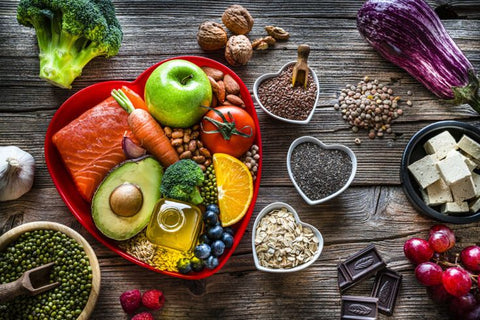Eating a healthy diet throughout life helps prevent non-communicable diseases and disorders. However, increased production of processed foods, rapid urbanisation and changing lifestyles have led to a shift in dietary habits. People now consume more high-calorie foods, fats, free sugars and salt/sodium, and many people do not eat enough fruits, vegetables and dietary fibre such as whole grains.
The exact composition of a varied, balanced and healthy diet will be determined by each person's characteristics (age, sex, lifestyle and level of physical activity), cultural context, locally available foods and eating habits . However, the basic principles of healthy eating remain the same throughout the world.
Practical tips for maintaining a healthy diet:
Fruits, vegetables and greens
Eating at least 400 g, or five portions of fruit and vegetables a day reduces the risk of developing diseases and helps ensure a sufficient daily intake of dietary fibre.
Fats
Reducing total fat consumption to less than 30% of daily caloric intake helps prevent unhealthy weight gain among the adult population.

Salt, sodium and potassium
Most people consume too much sodium through salt (an average of 9 to 12 g of salt per day) and not enough potassium (less than 3.5 g). Too much salt and not enough potassium contribute to high blood pressure, which in turn increases the risk of coronary heart disease and stroke.
People are often unaware of the amount of salt they consume, as most salt intake comes from processed foods or foods that are frequently consumed in large quantities (such as bread). Salt is also added to foods when they are cooked or where they are consumed (e.g. table salt).
Sugars
Adults and children should reduce free sugars intake to less than 10% of total energy intake . A reduction to less than 5% of total energy intake would provide additional health benefits.
Excess calories from foods and beverages high in free sugars also contribute to weight gain, which can lead to overweight and obesity. Recent scientific evidence shows that free sugars influence blood pressure and serum lipids, and suggests that reducing their intake reduces risk factors for cardiovascular disease.

Healthy eating in adults
A healthy diet includes the following:
Fruits, vegetables, legumes (such as lentils and beans), nuts, and whole grains (for example, unprocessed corn, millet, oats, wheat, or brown rice).
At least 400 g (i.e. five servings) of fruits and vegetables a day , except potatoes, sweet potatoes, cassava and other starchy tubers.
Less than 10% of total calorie intake comes from free sugars , which is 50 grams (or about 12 level teaspoons) for a person of healthy body weight consuming about 2,000 calories a day, although for additional health benefits less than 5% of total calorie intake is ideal . Free sugars include any sugars added to foods or drinks by manufacturers, cooks or consumers, including sugars naturally present in honey, syrups, and fruit juices and concentrates.
Less than 5 grams (about a teaspoon) per day of salt that should be iodized.

Less than 30% of daily calories from fat . Unsaturated fats (found in fish, avocados, nuts, and sunflower, soybean, canola and olive oils) are preferable to saturated fats (found in fatty meats, butter, palm and coconut oils, cream, cheese, clarified butter and lard), and trans fats of all types, particularly industrially produced ones (found in frozen pizzas, cakes, biscuits, pastries, wafers, cooking oils and spreads), and animal trans fats (found in meat and dairy products from ruminants such as cows, sheep and goats). Industrially produced trans fats are not part of a healthy diet and should be avoided.
And the amount?
The concept of quantity is linked to that of portion. By portion we mean the quantity or portion of food appropriate to the size of a "normal" plate; it can also refer to one or more units: egg, yogurt, pieces of fruit, etc.
How can I plan my diet to be balanced and healthy?
A healthy diet consists of eating everything without excess and distributing food throughout the day with a pattern similar to the following:





Comments (0)
There are no comments for this article. Be the first one to leave a message!